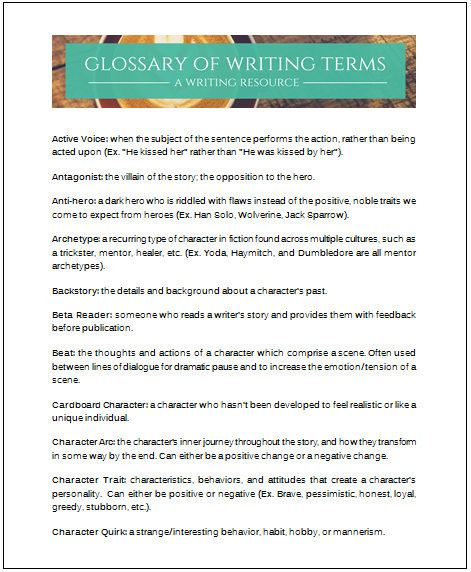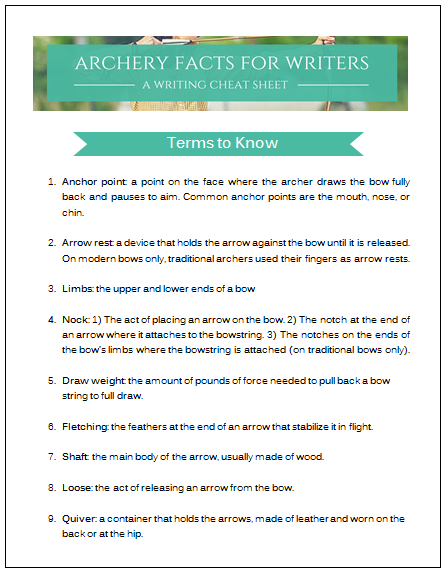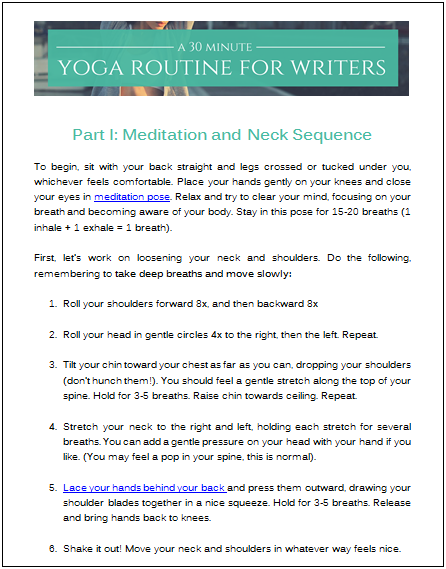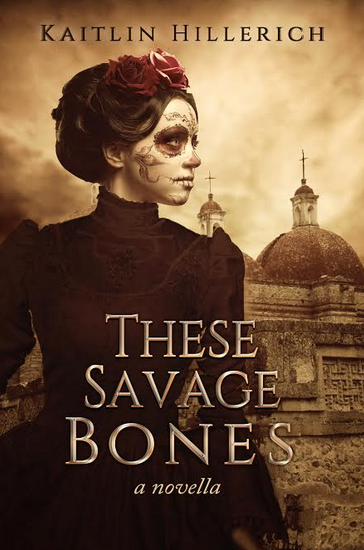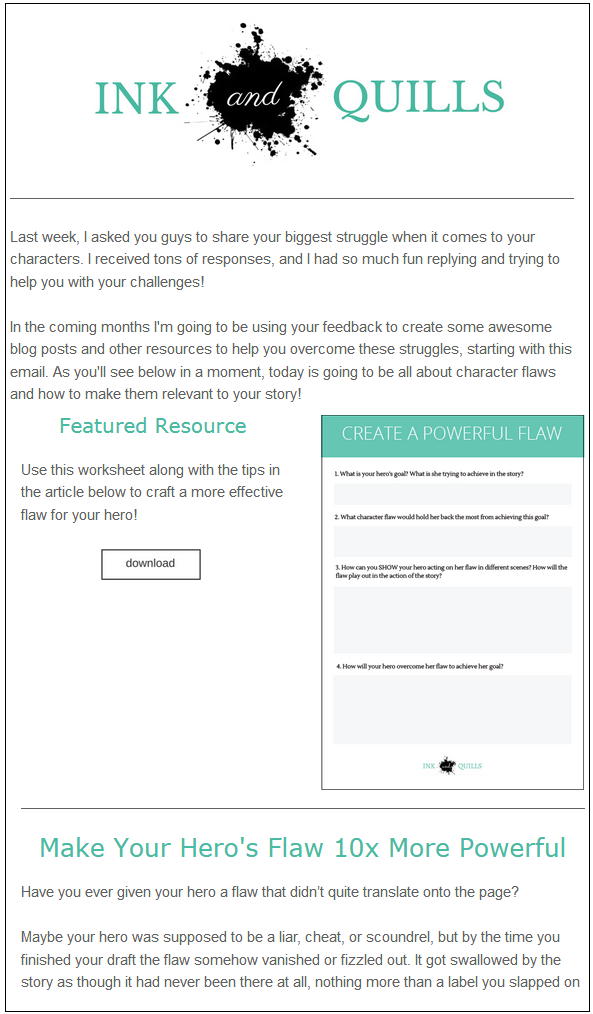 Years ago, I remember watching a film called Vantage Point. The plot revolved around an assassination attempt on the U.S. President, and in order to catch the would-be assassin government agents had to piece together clues from witnesses.
Years ago, I remember watching a film called Vantage Point. The plot revolved around an assassination attempt on the U.S. President, and in order to catch the would-be assassin government agents had to piece together clues from witnesses.
Each witness had a different point of view of the assassination attempt from their place in the crowd. Each one saw and experienced the moment differently. From a police officer to a news reporter to an ordinary bystander, each had a different story to tell of the same event.
And that, my friend, is point of view–the “lens” or perspective through which a story is told, and in whose voice. But just who is telling the story? In fiction, different points of view use varying techniques to give the reader a different experience. Let’s look at the options available to you as a writer.
First Person Point of View
You’ve probably come across this one before, as it’s one of the most popular points of view (POV) used in fiction, especially in Young Adult novels. In this point of view, the main character is the one telling the story. The story is written in the character’s voice using the pronouns I/me/my.
The advantage of this POV is that the reader is drawn right into the character’s head. We see the world through their eyes and hear their thoughts. It’s a very intimate perspective. As such, however, the reader is limited to what the main character knows or sees, which can be either an advantage or disadvantage depending on the story you’re trying to tell.
Examples: The Hunger Games by Suzanne Collins, The Fault in Our Stars by John Green, The Help by Kathryn Stockett, Memoirs of a Geisha by Arthur Golden, The Catcher in the Rye by J.D. Salinger, and The Great Gatsby by F. Scott Fitzgerald
Second Person Point of View
Second person point of view is when the author speaks directly to the reader using you/your. This places the reader directly into the story as though they are the main character and has a very engaging effect. Let’s look at an example from Leo Tolstoy’s short story trio, The Sevastopol Sketches:
Yes ! disenchantment certainly awaits you, if you are entering Sevastopol for the first time. In vain will you seek, on even a single countenance, for traces of anxiety, discomposure, or even of enthusiasm, readiness for death, decision, — there is nothing of the sort. You will see the tradespeople quietly engaged in the duties of their callings, so that, possibly, you may reproach yourself for superfluous raptures, you may entertain some doubt as to the justice of the ideas regarding the heroism of the defenders of Sevastopol which you have formed from stories, descriptions, and the sights and sounds on the northern side.
As you can see, second person almost turns the reader into a participant in the story. It also makes the events more personal; it makes us feel as though we have a stake in the story and forces more internal reflection on our thoughts and feelings about what is happening.
This point of view is rarely used, and when it is, it’s usually found in short stories or parts of a novel. It’s extremely difficult to maintain second person throughout an entire novel and do it well. I would only recommend using second person in short stories or literary fiction, which experiments with the art of writing. For commercial fiction written for entertainment, it’s best to skip it.
Though it isn’t popular, authors can and have used second person successfully. For example, Italo Calvino’s If On A Winter’s Night A Traveller uses second person in alternating chapters, and William Faulkner uses it in sections of his novel Absalom, Absalom!. A few brave and talented authors have even written their entire novel in second person, such as Jay McInerney’s Bright Lights, Big City.

Third Person Point of View
Another popular point of view which you’re probably familiar with is third person. This is the point of view used most frequently in fiction. In this point of view, the reader becomes an outsider looking in on the story as it’s told from the main character’s perspective using he/she/they.
Although the story is told from the character’s perspective, it’s told in the author’s voice (though there is one exception to this which we’ll get to in a moment!). There are three types of third person: Third Person Omniscient, Third Person Limited, and Deep Point of View.
Third Person Omniscient
“Omciscient” means “all knowing” and that’s exactly what this point of view is.
The story is narrated to the reader in the disembodied voice of an all-knowing, all-seeing god who knows what all of the characters are thinking and feeling at all times. The narrator might even slip into second person occasionally and address the reader (a huge no-no in modern fiction!) or state his own opinions. Omniscient point of view is completely unlimited, and pretty much anything goes.
Here’s a quick example:
“Did you find your keys?” Mary asked, irritated at John’s carelessness. He was always losing everything. Why can’t he be more organized? she thought. He’s always wasting my time. Her jaw clenched in anger.
John ran a hand through his hair. “No. I could have sworn I left them on the kitchen table.” He turned away from her angry face, his own frustration mounting. She thinks I’m an idiot, he thought. Why can’t I remember where they are? Desperation began to creep over him.
Do you see how in omniscient point of view we are in both character’s heads at once? This style of writing was most popular in 19th century literature, but since then reader’s tastes have changes and it’s now less favored in modern-day fiction.
Today, we call this switching back and forth between multiple character’s thoughts within the same scene “head hopping,” and it’s often frowned upon. All of the jumping around can be disorienting to the reader and leave them confused about whose story this is supposed to be.
But what if you need the perspectives of multiple characters to tell your story? There is another technique for this which is more popular and common modern fiction, which we’ll get to in the last section.
Examples of third person omniscient novels: War and Peace by Leo Tolstoy, The Scarlet Letter by Nathaniel Hawthorne, and Pride and Prejudice by Jane Austen.
Third Person Limited
This is the style of third person that is more popular with modern readers. We remain in one character’s head throughout the story, only seeing things from their perspective. This means we only hear their thoughts, feel what they feel, and know what they know.
Let’s revisit our previous example of Mary and John, for a moment. This time, I’ll limit the point of view to Mary’s perspective only:
“Did you find your keys?” Mary asked, irritated at John’s carelessness. He was always losing everything. Why can’t he be more organized? she thought. He’s always wasting my time. Her jaw clenched in anger.
John ran a hand through his hair. “No. I could have sworn I left them on the kitchen table.” He turned away from her, his lips pressed in a flat line.
Mary sighed. He couldn’t even look her in the eye, he looked like a scolded, cowering dog. Maybe she shouldn’t look so angry. She drew in a deep breath and tried to soften her features. Lord, give me patience.
Do you see the difference? We don’t know what John is thinking or feeling. We experience everything from Mary’s POV and only know what’s going on inside her head. Unlike omniscient POV which is limitless, in this POV we are “limited” to Mary’s perspective.
Examples of limited third person: The Giver by Lois Lowry, Fahrenheit 451 by Ray Bradbury, and A Song of Ice and Fire series (Game of Thrones) by George R.R. Martin.
Deep Point of View
Deep point of view is a style of writing that is beginning to grow in popularity. It uses third person pronouns he/she/they, but instead of using the author’s voice the story is told in hero’s voice. This brings the reader deep into the hero’s head and allows them to experience the story through the hero, feeling what they feel.
Essentially, it’s like first person except with he/she instead of I. All “evidence” of the author’s hand (phrases like he said, she felt, he wondered, etc.) are also removed to erase the distance between the reader and hero.
Let’s look at this technique in action.
Example 1 (Third Person Limited):
Kali hurried though the village. She wondered if he was already waiting for her. She lifted her skirts and leapt over a puddle. She knew she should have left earlier, but her mother had kept on talking about the chickens.
Example 2 (Deep POV):
Kali hurried through the village. Was he already waiting for her? She lifted her skirts and leapt over a puddle. She should have left earlier, but her mother had kept on and on about the chickens. Chickens this, and eggs that. Be sure to this, don’t do it like that. Kali’s fidgety impatience had driven the details from her memory. Hopefully they weren’t too important.
Notice the difference between the two examples. The second brings you into Kali’s head by removing “interruptions” by the author like “she wondered” or “she knew.” The second example also uses more of Kali’s voice to reveal her thoughts, feelings, and perceptions–it’s almost as though she is the narrator, yet we stay in third person point of view.
This point of view can be challenging to write and is still emerging in fiction, but it’s quickly gaining popularity in the writing world because of the intimacy it creates between the reader and character.
Multiple Point of View
When you have a story that needs to be told from multiple perspectives, you have two options: you can either use third person omniscient and head hop, or you can use multiple point of view.
Multiple point of view can use third person limited, deep point of view, or first person. It stays in one character’s head at a time per scene or chapter. When the writer needs to switch to a different character’s perspective, they skip a line between scenes or begin a new chapter to signal to the reader that they are changing to a new character. In modern fiction, this technique is the preferred way of telling a story with multiple characters.
Examples: A Song of Ice and Fire series (Game of Thrones) by George R.R. Martin, The Night Circus by Erin Morgenstern, and The Lunar Chronicles by Marissa Meyer.
Which POV is Right for Your Story?
 So now that we’ve explored your options, which one should you choose?
So now that we’ve explored your options, which one should you choose?
If you’re uncertain, try asking yourself these questions:
- How many perspectives do I need to tell this story?
- Do I want to create distance or intimacy between the reader and the character?
- Do I want to tell the story in my own voice, or the character’s?
If you need multiple perspectives to tell your story you might use multiple POV or experiment with third person omniscient.
If you want to create intimacy between your reader and character, first person or deep point of view are the way to go. Or, you could create intimacy between the author and reader with second person.
Need a little more distance? Try third person limited or omniscient point of view.
If you want your character’s voice to really come through in your story, you’ll want to employ first person or deep point of view. Or, if you prefer to use your own voice, third person limited & omniscient and second person will all allow you to do so.
As you can see, it all depends upon the story you want to tell and how you want to tell it. I don’t think there’s a “right” or “wrong” point of view, but for a new writer I would recommend maybe starting with third person limited or first person as those as the most common and easiest of the bunch to write.
Many times, the point of view a writer chooses depends on personal preference. Some writers find first person too challenging or invasive, while others love it. Personally, I’ve always preferred third person limited (I’m now moving toward deep POV), but I do occasionally use first person. Sometimes the characters “speak” to me in first person, and sometimes I hear their story in third person.
The beauty of point of view is that each method gives the reader a different experience. As the author, it’s up to you to decide how you want your readers to experience your story. Do you want to draw them into the hero’s head? Make them a participant? Show them different perspectives through multiple characters? The power rests in your hands.
What’s your favorite point of view to read and write? Let me know in the comments below!

 So you’ve decided to write your first novel (high fives for you, friend!) and you’re eager to get started. But where exactly do you begin? Should you outline your plot first? Or should you start by developing your characters? But wait–what about research?
So you’ve decided to write your first novel (high fives for you, friend!) and you’re eager to get started. But where exactly do you begin? Should you outline your plot first? Or should you start by developing your characters? But wait–what about research?




















